Specialist Orchid Sellers Share 10 Essential Watering Tips To Keep Your Plant Happy

HOUSEPLANTS > ORCHIDS > WATERING

Elizabeth is a Permaculture Garden Designer, Sustainability Consultant and Professional Writer, working as an advocate for positive change. She graduated from the University of St. Andrews with an MA in English and Philosophy and obtained a Diploma in Applied Permaculture Design from the Permaculture Association.
Reviewed By COLIN SKELLY

Colin is a Horticulturist and Horticultural Consultant with experience in a range of practical and managerial roles across heritage, commercial and public horticulture. He holds the Royal Horticultural Society’s Master of Horticulture award and has a particular interest in horticultural ecology and naturalistic planting for habitat and climate resilience.
Contributions From DANIEL TOOR

Daniel is the owner of The Dark Orchid, a specialist orchid seller that ships exotic and rare orchid varieties throughout the UK. Some of the orchids for sale can be found on his Instagram page, where he shares photos of some stunning varieties.

Malcolm has been growing orchids for 30 years and had lots of experience searching for, growing and caring for orchids. He previously ran his own business providing orchid sundries to hobbyist growers and he also delivers lectures to various orchid and gardening clubs across the UK. Malcolm is currently the Chairman, Vice President and Show Secretary of the Solihull & District Orchid Society.

With several published books on the topic of orchids, Sara is the owner of Burnham Nurseries Ltd, one of the UK’s leading orchid sellers that first opened over 70 years ago. Sara has worked for the nursery for 32 years, during which time she has won various awards, most recently winning a Gold Medal at the RHS Wisley Orchid Show in 2022.
IN THIS GUIDE
- 1) Water Weekly In The Growing Season
- 2) Reduce Watering In Winter
- 3) Maintain Moist (But Not Waterlogged!) Conditions
- 4) Opt For A Clear Container
- 5) Use Rainwater
- 6) Use Water At Room Temperature
- 7) Water From Above Or Below
- 8) Do Not Wet The Leaves Or The Crown
- 9) Don’t Feed Every Time You Water
- 10) Only Mist The Foliage And Aerial Roots
- References
ORCHID GUIDES
Orchids are impressive and popular for growing indoors.
The most popular are moth orchids, also known as Phalaenopsis, which are epiphytic plants from tropical climes that make wonderful house plants and cope well in centrally heated spaces.1Research Guides: Phalaenopsis (moth orchid). (n.d.). New York Botanical Gardens. Retrieved March 29, 2023, from https://libguides.nybg.org/phalaenopsis
Though they can grow very well in our homes, caring for orchids like these correctly is essential and, when it comes to orchid care, watering is one of the most important things of all.
“If there’s one factor that can make or break your orchid growing experience, it’s water,” says Daniel Toor, the Owner of The Dark Orchid.
The key to success with any orchid is keeping the roots neither too wet nor too dry, but there are other things to consider.
Here are 10 tips to help you make sure that you water moth orchids correctly:
- Water weekly during the growing season.
- Reduce watering in winter and pay attention to light levels and temperatures.
- Maintain moist but not waterlogged conditions.
- Consider a clear container so you can see if the soil is moist more clearly.
- Use rainwater to water orchids wherever possible.
- Make sure that the water you use is at room temperature.
- When watering, water from above or below.
- Do not wet the leaves or crown when watering.
- Don’t feed every time you water.
- Mist foliage and aerial roots but not the flowers.
You’ll find more detail on each of these points (including commentary from expert orchid growers) below.
| Difficulty | Easy |
| Equipment Required | Watering can, rainwater |
| When To Water | Weekly (growing season), fortnightly (winter) |
1) Water Weekly In The Growing Season
When growing moth orchids, the amount that you water will vary depending on a number of different factors.
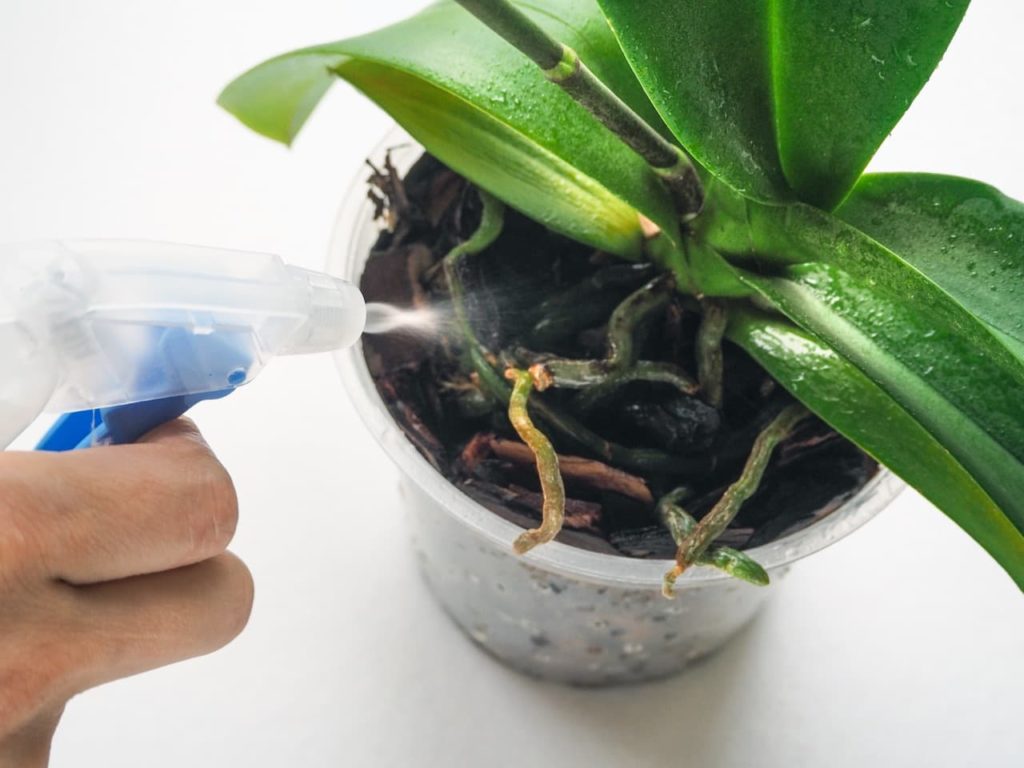
However, as a general rule of thumb, you can expect to water your moth orchid once a week through most of the year and a little less during the coldest months.
“Water and feed once a week in the summer but every 10 days in the winter, ensuring the plant is removed to the kitchen draining board so that all excess water will run away,” says Malcolm Moodie from the Solihull & District Orchid Society.
2) Reduce Watering In Winter
In the winter months, you are likely to have to water your orchid a little less frequently, but you will still have to keep an eye on your orchid to make sure that the roots are not allowed to dry out entirely.
Remember, the amount of water required will vary somewhat based on environmental factors like light levels and temperatures.
3) Maintain Moist (But Not Waterlogged!) Conditions
Your goal when growing moth orchids is to keep the roots happy and healthy.
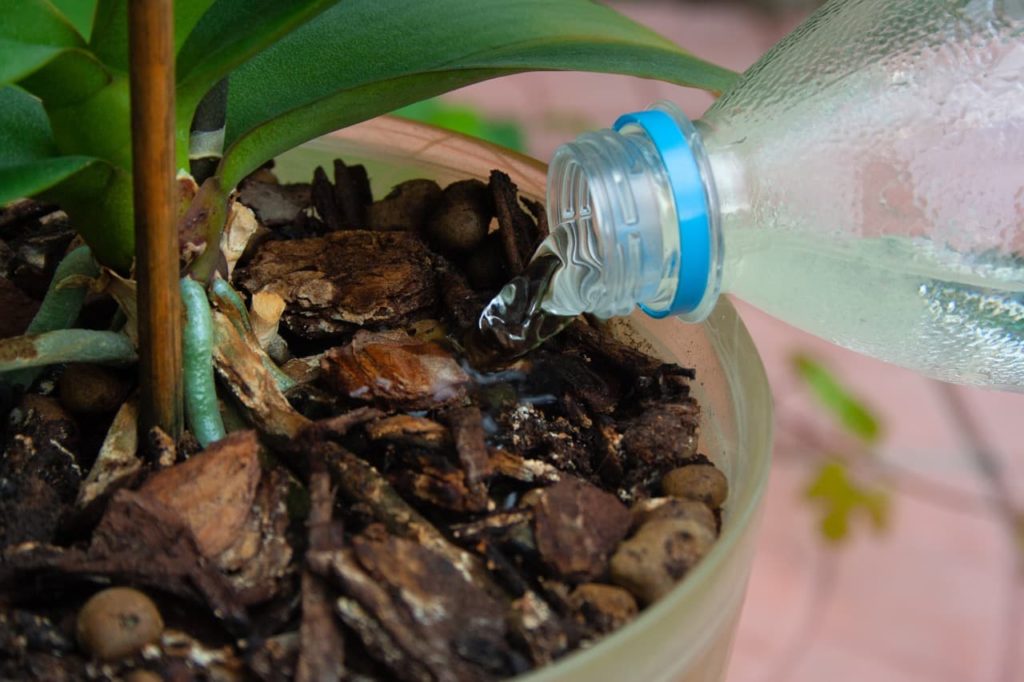
The roots do need access to moisture consistently, but they cannot tolerate getting entirely dried out, nor can they handle being waterlogged either.
As an orchid parent, your goal is to make sure that you keep the roots in the ‘Goldilocks zone’ – just right.
4) Opt For A Clear Container
Getting the watering right is the most challenging thing about growing most houseplants and moth orchids are, of course, no exception.
Working out when to water involves examining your orchid.
“The biggest problem tends to be with people overwatering orchids in the home,” says Sara Rittershausen from Burnham Nurseries Ltd.
“Watering too often means that the roots don’t dry out enough and then they can rot and not function, leading to the plant dehydrating.
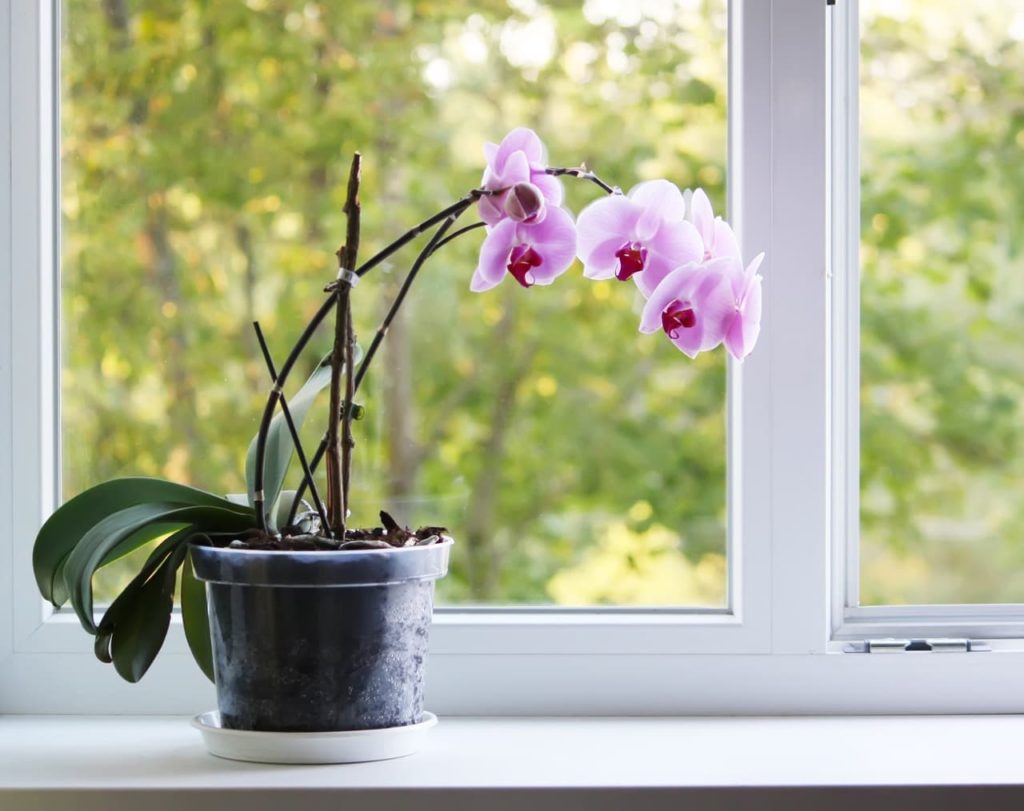
“Always check the pot once a week but only water when dry until you get to know how often your orchid needs to be watered.”
Choosing a clear container for your moth orchid can be a good idea because it can help you to see when the compost is moist and when it dries out through its colour.
This can help with keeping the moisture levels just right for the orchid roots.
“Clear pots make the process of knowing when to water far easier,” shares Horticultural Consultant Colin Skelly.
“There is a distinct contrast between moist and dry compost, providing a visual marker which is particularly important in winter to avoid overwatering.”
Some roots can also photosynthesise, which is another reason to choose a clear receptacle.
5) Use Rainwater
Chlorinated tap water is not good for orchids, so it is best wherever possible to use rainwater to water your moth orchids.
“Try to use rainwater, if possible, especially in hard water areas,” says Malcolm.
If this is not possible, then it is best to boil tap water before you use it.
6) Use Water At Room Temperature
It is also important not to use water that is too frigid to water your delicate orchids.
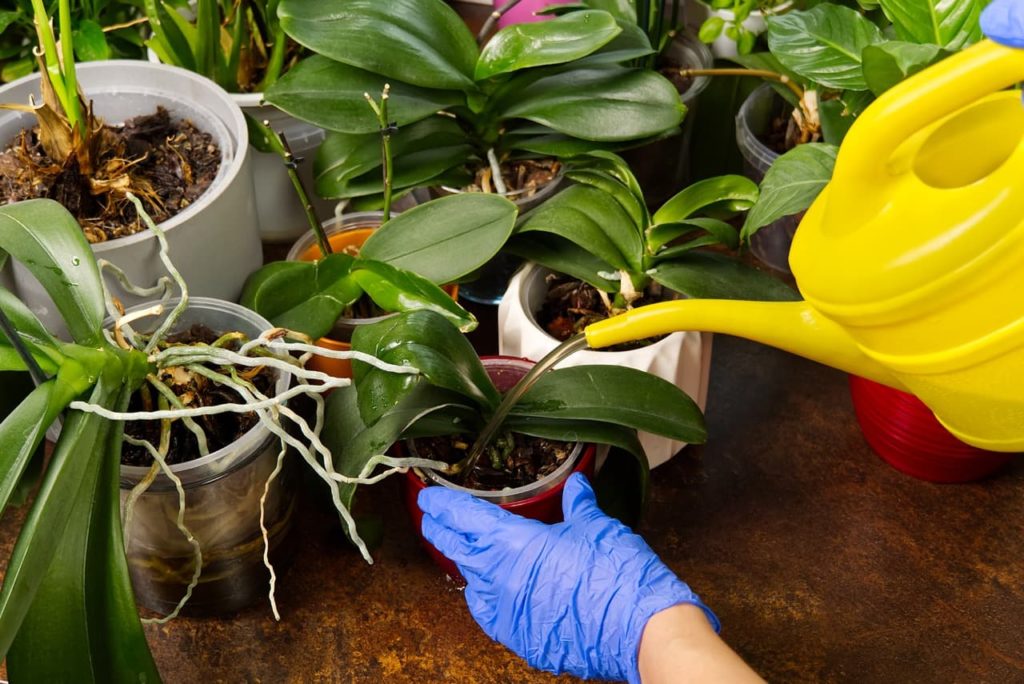
“Bring your rainwater into the house 24 hours before use to ensure the water is at the same temperature as the plant,” adds Malcom.
Make sure that the water you use is at room temperature before you water.
7) Water From Above Or Below
You can water moth orchids from above, making sure that you discard any water that ends up in the saucer or plant tray below the container.
Alternatively, you can fill a bowl or sink and place your orchid in it for a period of time, before returning it to its usual position.
8) Do Not Wet The Leaves Or The Crown
However, whether watering from above or below, make sure that you do not get water splashing onto the leaves or the crown, as this can increase the likelihood of a number of issues, including fungal problems.
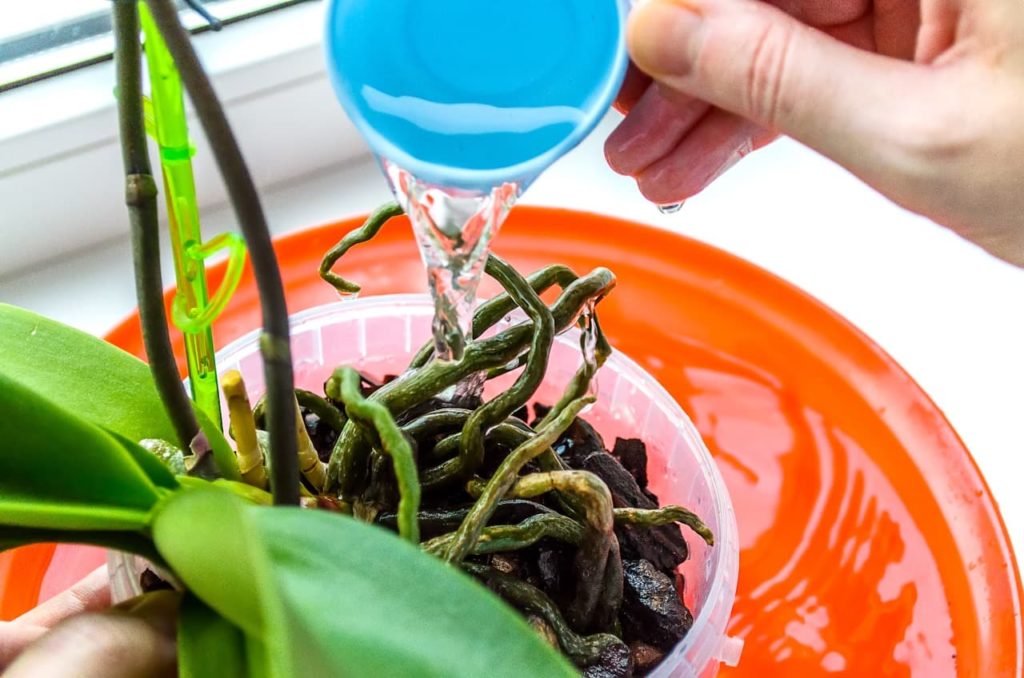
Make sure you get the water to the roots where it is needed.
9) Don’t Feed Every Time You Water
Orchids require feeding for best results and specialist orchid feeds are often given when watering.
However, if you feed every time you water, this can lead to a build-up of salts that can be detrimental to your orchid.
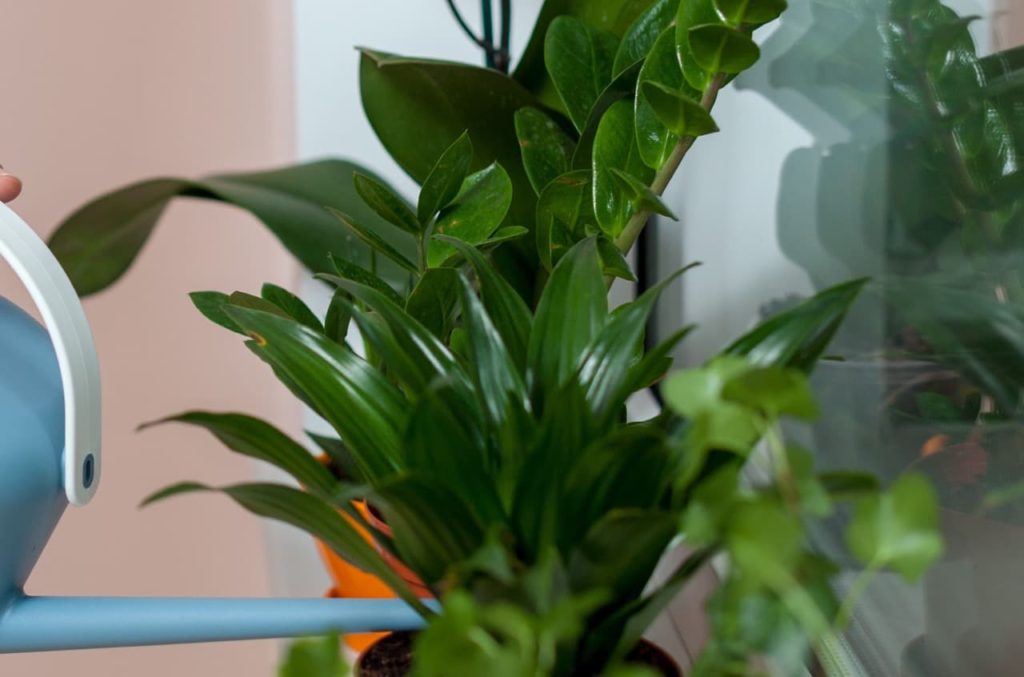
So, make sure that every fourth time you water, you do so without feeding so that you flush salts through.
Remember, feeding should also only be in summer and you do not need to feed much, if at all, over the winter months.
10) Only Mist The Foliage And Aerial Roots
In hot weather, mature moth orchids may need to be misted daily in order to increase humidity where this may be low.
“Do not water too often and mist regularly to create humidity,” says Sara.
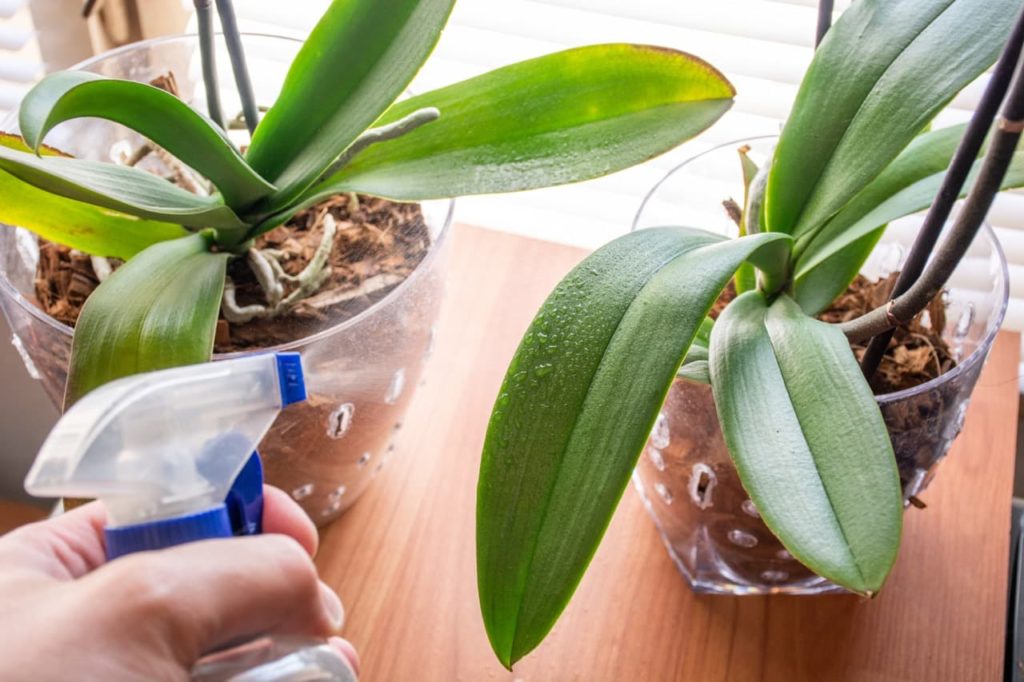
When misting, make sure that you mist the foliage and aerial roots and avoid misting the flowers, as this can cause spotting or patchiness to develop on the petals of the blooms.
References
- 1Research Guides: Phalaenopsis (moth orchid). (n.d.). New York Botanical Gardens. Retrieved March 29, 2023, from https://libguides.nybg.org/phalaenopsis
